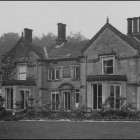Listed Buildings
Stoney Middleton has over 20 listed buildings and locations
You can view the full article by clicking on the article title or its associated thumbnail image.
-
Countryfile Feature Stoney Middleton’s Roman Bath House

It was a proud day for Stoney Middleton when one of the most popular BBC programmes Countryfile visited the village. The programme has been running for 25 years and has over 8 million viewers. The programme showcases the most important aspects of Britain’s beautiful countryside, its wildlife and heritage assets, their decision to feature Stoney… Learn more
-
Roman Bath House

The Bath House known locally as the Roman Baths, perhaps became known as such, due to the find of Roman coins discovered at the site. The water is believed to have healing powers benefiting sufferers of rheumatism and other illnesses, which gave rise to the foundation of the local church and its naming as ‘St… Learn more
-
St Martin’s Church

St. Martin’s church was built by Joan Eyre in the 15th Century in thanksgiving for the safe return of her husband from Agincourt (1415). It is a very unusual and beautiful building. The octagonal nave (the oldest of only two in Britain) is very interesting as all the pews face the centre of the church… Learn more
-
Stoney Middleton Hall

Middleton Hall, hidden away behind the church, is a restored 17th-century; Grade II listed building, home of the Denman family for many years. Thomas Denman, who acquired the hall following the death of his uncle, became Lord Chief Justice of England in 1832, a position he held for 18 years until 1850. He enlarged and… Learn more
-
The Malt House

Many villages had a malt house to supply the needs of local publicans, none more important than the malt house in Stoney Middleton. The village had 12 public houses at one time or another and would have needed significant quantities of malt to keep the beer pumps working. Early history of malt houses In the eighteenth century local… Learn more
-
Toll House

Stoney Middleton’s High Street must be the steepest High Street in the country and was the only route through the village before a road was blasted through Middleton Dale in 1830. In 1840 William Morton of Froggatt a stonemason, and George Buxton a joiner of Stoney Middleton built the Toll House for £144.00 to charge… Learn more
-
Village Cross

The Village Cross was erected in the village in 1846 to commemorate the repealing of the Corn Laws, Laws first introduced in 1815; they imposed expensive duties on imported corn and other grains for grinding from other countries protecting the English and Irish farmers. The Cross The village cross, locally known as the Corn Cross is an important symbol… Learn more
-
Wesleyan Reform Chapel

The Chapel was built in 1829 as a Wesleyan Methodist Church on land purchased from the Furness family for £15. Electricity was installed in 1931 and it was the first building in the village to have electricity. The bell tower and a vestry were added later and further altered in 1946. The ruins of two cottages next… Learn more